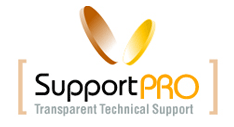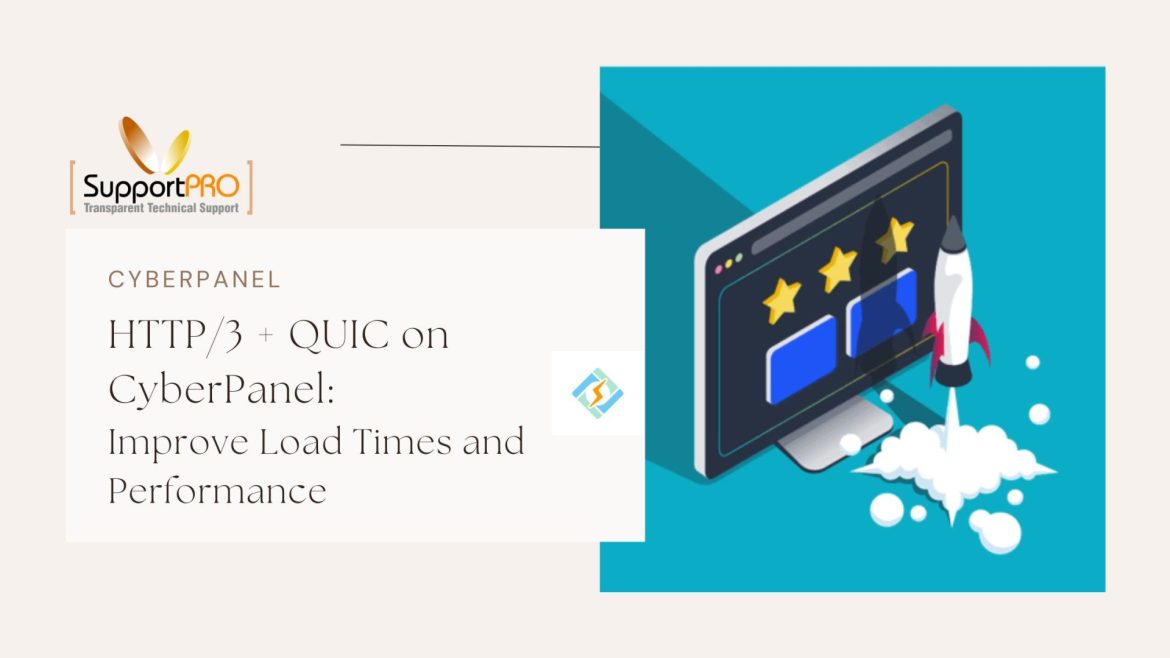In an era where instant access to information is the norm, ensuring your website loads quickly is crucial for retaining visitors and improving search engine rankings. Users expect seamless, lightning-fast browsing, and even a slight delay can lead to increased bounce rates and lost conversions. Modern protocols like HTTP/3 and QUIC significantly enhance web performance by improving data transmission speed, security, and reliability.
Unlike traditional HTTP versions that rely on TCP, HTTP/3 uses QUIC, which operates over UDP. This eliminates the latency caused by TCP’s handshake process and provides faster, more stable connections—especially useful for users on mobile or unreliable networks.
CyberPanel, a modern web hosting control panel powered by OpenLiteSpeed, offers native support for HTTP/3 and QUIC. This integration enables website owners to reduce latency, accelerate page loads, and enhance security with minimal configuration.
In this step-by-step guide, you’ll learn what HTTP/3 and QUIC are, why they matter, and how to enable them on your CyberPanel server to boost website performance and SEO.
Understanding HTTP/3 and QUIC
What is HTTP/3?
As the newest iteration of the HyperText Transfer Protocol, HTTP/3 builds upon HTTP/2’s foundation while utilizing QUIC to address its performance bottlenecks. Unlike previous HTTP versions that rely on TCP (Transmission Control Protocol), HTTP/3 uses QUIC to deliver faster, more secure, and more reliable connections, especially in scenarios with high latency or unstable network conditions.
What is QUIC?
QUIC (Quick UDP Internet Connections) is a transport layer protocol developed by Google. It enhances speed and reliability by:
- Using UDP for faster data transmission
- Eliminating head-of-line blocking
- Integrating TLS encryption by default
QUIC supports multiplexed connections and rapid re-connections, especially on mobile devices and spotty networks.
Key Benefits of HTTP/3 and QUIC
- Faster Load Times – Reduces latency by skipping TCP handshakes
- Enhanced Security – Built-in TLS 1.3 encryption by default
- Mobile Optimization – Efficiently handles network switches and packet loss
- Multiplexing Support – Prevents head-of-line blocking for smoother content loading
Steps to Activate HTTP/3 and QUIC on CyberPanel
Step 1: Verify CyberPanel Installation
Ensure CyberPanel is installed and running. Access your panel via:
https://yourdomain.com:8090Log in and confirm your web server is operational and up-to-date.
Step 2: Update OpenLiteSpeed
HTTP/3 requires the latest version of OpenLiteSpeed:
For Ubuntu/Debian:
sudo apt update && sudo apt upgradeFor CentOS/RHEL:
sudo yum update && sudo yum upgradeThen restart the server:
sudo systemctl restart lswsAccess the OpenLiteSpeed WebAdmin:
https://your-server-ip:7080Navigate to Listeners → Edit your HTTPS listener → Enable QUIC → Save.
Step 3: Edit Configuration File
Open:
/usr/local/lsws/conf/httpd_config.confAdd the following lines:
quicEnable 1 enableHttp3 1Save and restart:
sudo systemctl restart lswsStep 4: Verify HTTP/3 & QUIC Activation
Use curl:
curl -I --http3 https://yourdomain.comOr in Chrome:
- Open DevTools (Ctrl+Shift+I)
- Navigate to the Network tab
- Confirm
h3appears under the protocol column
As the web continues to evolve, enabling HTTP/3 and QUIC is a forward-thinking move. These protocols not only improve website speed and security, but also contribute to better SEO rankings, as search engines favor fast-loading sites.
By taking advantage of CyberPanel’s built-in support for HTTP/3 and QUIC, you can significantly enhance your website’s performance, deliver a better user experience, and stay ahead of the competition.
Start optimising your website today and future-proof your hosting infrastructure for the modern web with us.
Partner with SupportPRO for 24/7 proactive cloud support that keeps your business secure, scalable, and ahead of the curve.






